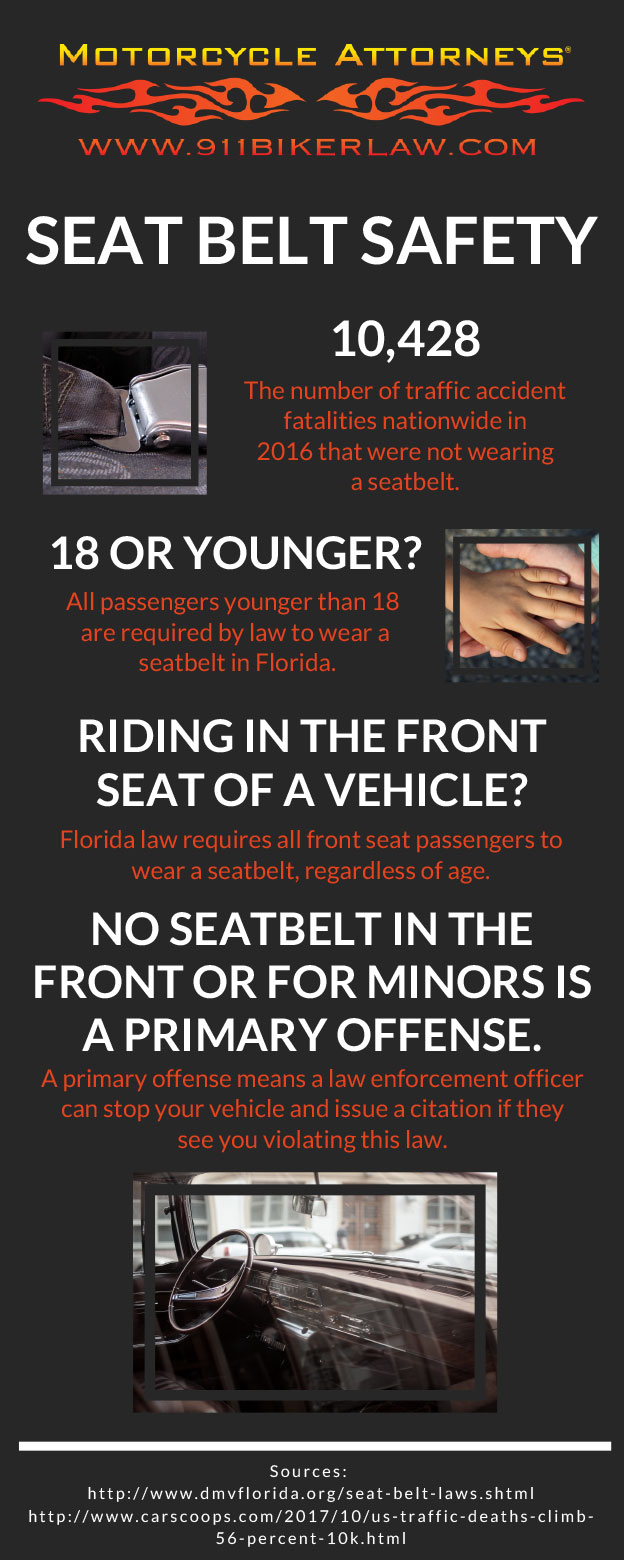Why Did Traffic Deaths Rise in 2016?
When the National Highway Traffic Safety Administration (NHTSA) recently released its 2016 figures for the number of traffic deaths, the number increased from 2015, though the reasons were mixed. Overall, traffic deaths rose by 5.6 percent to 37,461 deaths in 2016. Part of the increase can be attributed to lower gas prices and more miles driven by people. However, the NHTSA highlighted human choices are connected to 94 percent of serious crashes reported. These choices include driver errors, mistakes, and choices made before or during you’re behind the wheel.
Drunk Driving
Drunk driving caused 10,497 fatalities and was the leading cause of reckless driving, the leading area for traffic deaths in 2016. Throughout Florida, the blood or breath alcohol limit is 0.08 for drivers over the age of 21; for drivers under 21, the limit is 0.02 with more severe penalties.
Speeding
The amount of time saved by speeding rarely counters the human cost of accidents caused by speeding. Speeding-related traffic fatalities rose by four percent in 2016, killing 10,111 people.
Distracted Driving
Distracted driving-related traffic fatalities fell by 2.2 percent in 2016, but still caused more than 3,400 deaths. It’s generally defined as any activity behind the wheel that takes your full attention from the task of driving. Penalties for <a "Texting Accidents" href="https://www.911bikerlaw.com/texting-accidents-attorneys/">distracted driving vary from state to state, but many have enacted laws against cell phone use, including texting, and wearing headphones or earbuds.
Wearing Headphones or Earbuds
You see it every day on the road – other motorists and cyclists wearing headphones or earbuds while driving a vehicle. Yet, unless you need a hearing aid or other hearing improvement device, it’s illegal to wear headphones, earbuds, or other listening devices while driving in Florida. Many other states have no restrictions on them, but it’s best to stay distraction-free while driving as much as possible and ditch the headphones or earbuds.
Talking on the Phone, Even Hands-Free
Though Florida has no law against using a cell phone while driving, even hand-held, it’s still distracted driving. A 2016 study published in the journal Transportation Research found when drivers used hands-free or Bluetooth technology to talk on the phone while driving, they were still focusing more on the conversation than driving.
Texting and Emailing
Smartphones almost ensure we’re always connected to our personal and professional lives. But when trying to attend to business or life while driving with your smartphone, it can have devastating results. Most states, including Florida, have made texting, emailing, or manually typing into a wireless device a primary or secondary offense. In Florida, it’s a secondary offense, but you can still receive points against your license if it’s a second offense, it occurred in a school zone, and/or the action resulted in a crash. And though there are apps available to block your ability to text, email, and surf the internet while driving with your smartphone, no app is as effective as the conscientious decision not to do it.
Safe Driving Tips and Strategies
There is a dearth of information available on how to drive safely, but the key with any amount of information is putting it into practice.
Keep Your Focus On Driving
When you multi-task, especially behind-the-wheel, your focus is divided among multiple things and not on the task at hand – driving.
Be Defensive
We hear about defensive driving all the time, but practicing it is even more important. Driving defensively is simply being aware of what the drivers around you are doing and expecting the unexpected. Keep a two to three second gap between yourself and the vehicle in front of you. If the weather is bad, such as rain, increase this gap to four to five seconds.
Plan & Plan Ahead
It may seem easy to eat a burger or enjoy a to-go coffee while driving, but it’s still distracted driving. When driving and/or traveling, build in or allow time to stop for eating. Also, if you need to adjust the seat, mirrors, or climate controls in your vehicle, do so before driving down the road.
Live & Let Live
If the Kleenex box slides from the passenger seat to the floor at a stop light, let it go until you’ve reached your destination. Have any toll or garage fees or passes within easy reach before you begin driving. And always drive sober and wear your seat belt.
Wearing a Seat Belt Will Save Your Life
Though there have been numerous campaigns to raise awareness of seat belt usage, many people still opt not to. According to the CDC, seat belts reduce the number of serious crash-related injuries and deaths by nearly half. Sadly, the number of deaths in 2016 traffic accidents related to not wearing a seat belt trailed only drunk driving deaths at 10,428 people.
Florida has mandatory seat belt laws for people of all ages, unless the vehicle was manufactured before 1968.
- All passengers in the front seat of a vehicle are required to wear a seat belt.
- Children younger than 18 are required to wear a seatbelt, even in the backseat.
- Children younger than three are required to be in a federally approved child-restraint seat.
- Children who are four- or five-years-old must be in a child-restraint seat or seat belt, depending on weight requirements.
Contact 911 Biker Law If You’ve Been Injured
The 2016 statistics may seem overwhelming, but the odds of dying in a traffic crash are quite small, at 1.18 deaths for every 100 million vehicle miles driven. However, many people are injured each day in traffic crashes. If you’ve been injured in a crash, contact a personal injury attorney at 911 Biker Law. We ensure all necessary paperwork is filed in a timely manner, gather evidence related to your case, and approach every aspect with the utmost respect and care. For help and support following a traffic crash, contact 911 Biker Law today!



